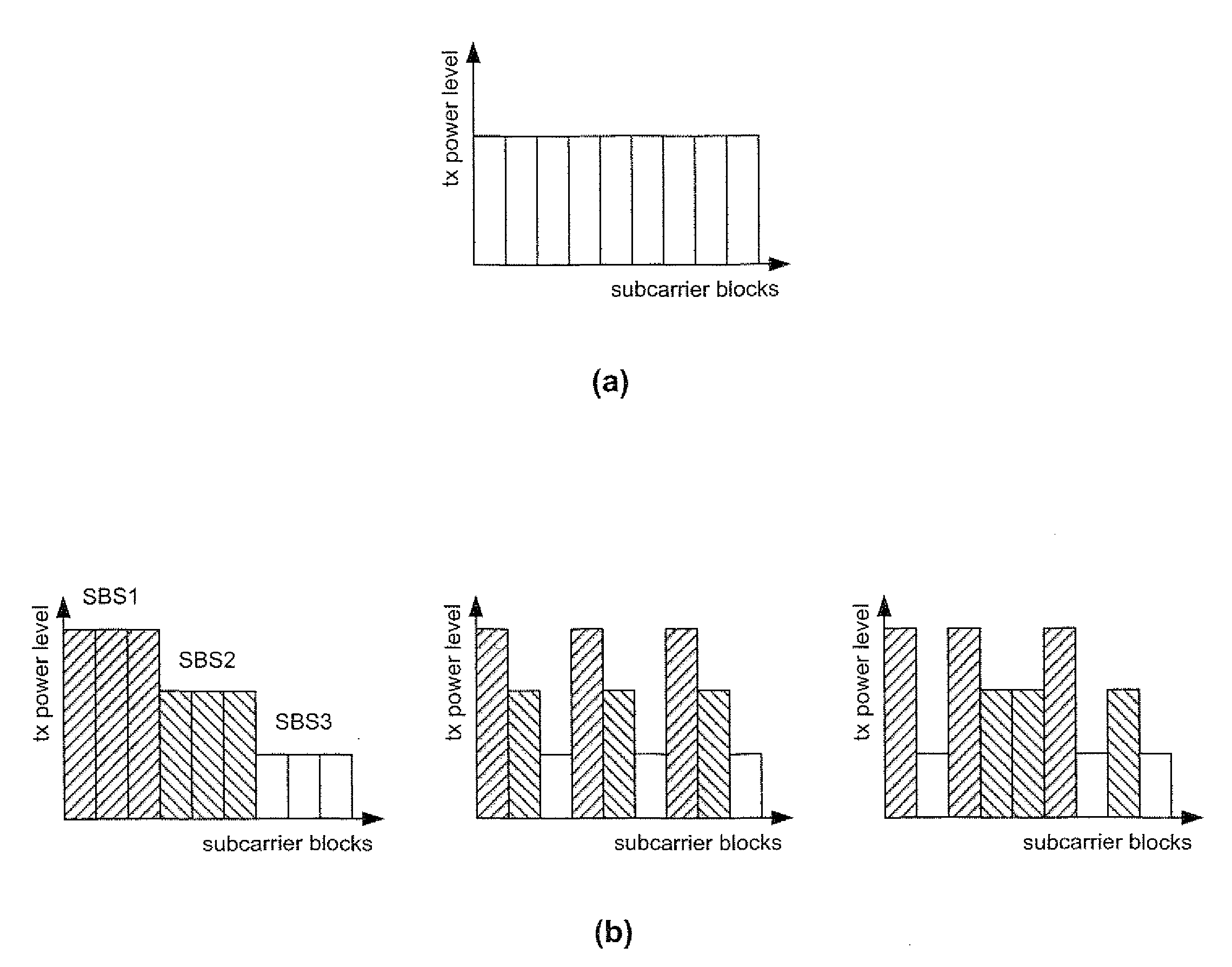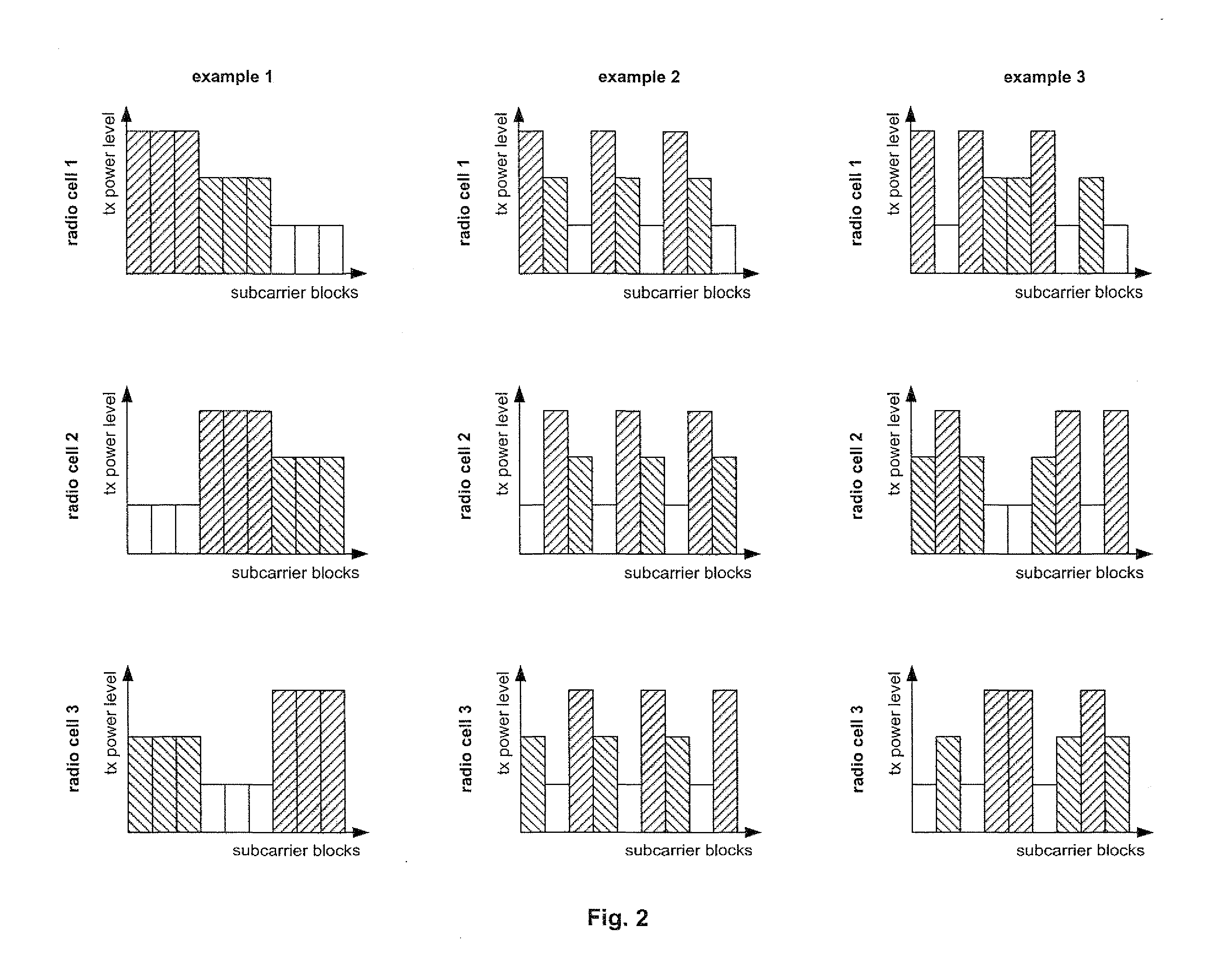Interference balancing in a wireless communication system
a wireless communication system and interference balancing technology, applied in wireless communication, power management, wireless commuication services, etc., can solve the problems of large average signal size, inaccurate dca and amc operation, and system interference limitation, so as to reduce the large average signal
- Summary
- Abstract
- Description
- Claims
- Application Information
AI Technical Summary
Benefits of technology
Problems solved by technology
Method used
Image
Examples
Embodiment Construction
[0094]In the following the present invention will be described with regard to wireless communication system using OFDM. Though the examples relate to OFDM, it should be noted that the ideas underlying the present invention may be readily applied to other FDM based communication systems as well.
[0095]According to an embodiment of the present invention the OFDM subcarrier blocks may be divided into N subcarrier block sets (SBS). For each SBS a different constant (or semi-static) transmit power level is defined, as depicted for three examples in FIG. 1(b). The assignment of the transmission power levels may be performed in accordance with the SBS power levels in adjacent cells in order to manipulate the distribution of the SIR levels within radio cells.
[0096]Compared to prior art, this power-offset assignment may have two major impacts on the system: Firstly, it allows to assign mobile stations such, that the path loss can be compensated somewhat by assigning subcarrier blocks from app...
PUM
 Login to View More
Login to View More Abstract
Description
Claims
Application Information
 Login to View More
Login to View More - R&D
- Intellectual Property
- Life Sciences
- Materials
- Tech Scout
- Unparalleled Data Quality
- Higher Quality Content
- 60% Fewer Hallucinations
Browse by: Latest US Patents, China's latest patents, Technical Efficacy Thesaurus, Application Domain, Technology Topic, Popular Technical Reports.
© 2025 PatSnap. All rights reserved.Legal|Privacy policy|Modern Slavery Act Transparency Statement|Sitemap|About US| Contact US: help@patsnap.com



